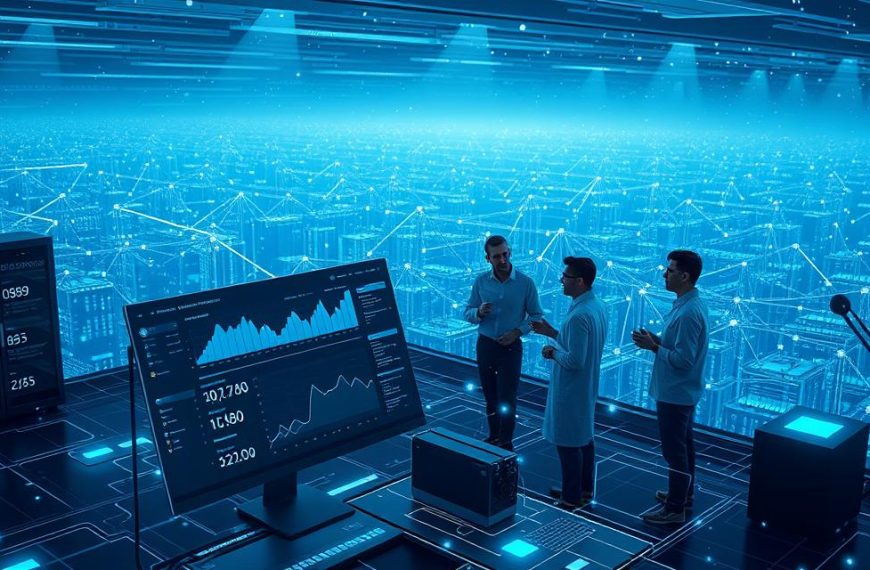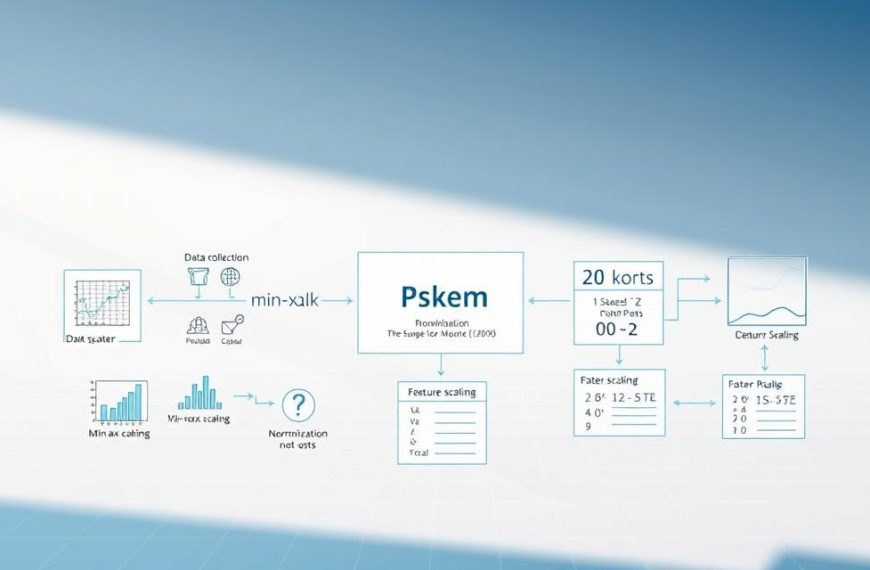Artificial intelligence drives modern technological advancements, yet its terminology often creates confusion. Professionals across industries must grasp how machine learning and deep learning relate within this ecosystem. While both enable systems to improve autonomously, their approaches differ significantly.
At its core, machine learning focuses on algorithms that learn patterns from structured data. These models adapt through experience, refining predictions without explicit programming. In contrast, deep learning employs layered neural networks to process unstructured information, mimicking human decision-making processes.
Understanding these distinctions proves vital for organisations investing in intelligent systems. From healthcare diagnostics to financial forecasting, each technology suits specific challenges. Factors like dataset size, computational resources, and problem complexity determine which approach delivers optimal results.
This guide explores their hierarchical relationship within artificial intelligence. We’ll analyse practical applications, scalability considerations, and performance benchmarks. By clarifying these concepts, businesses can make informed decisions when implementing advanced analytical solutions.
Introduction to Machine Learning and Deep Learning
Modern industries increasingly rely on adaptive systems that evolve through data analysis. Two dominant approaches drive this transformation: machine learning and deep learning. While both fall under artificial intelligence, their methodologies address different data challenges across sectors.
Defining Machine Learning
Machine learning enables computers to improve task performance through experience. Learning algorithms analyse structured datasets like spreadsheets, identifying patterns through statistical models. Key techniques include:
- Supervised approaches using labelled examples
- Unsupervised methods discovering hidden relationships
- Reinforcement strategies optimising decision-making
These machine learning algorithms require carefully curated features, relying on human expertise to identify relevant data attributes.
Understanding Deep Learning
Deep learning employs layered artificial neural networks resembling biological brain structures. These networks process raw, unstructured inputs through multiple computational layers, automatically extracting relevant characteristics. This architecture eliminates manual feature engineering – a key advantage in deep learning applications.
The technology thrives in complex scenarios involving:
- Natural language interpretation
- Visual recognition systems
- Real-time audio processing
Advanced neural networks enable nuanced understanding of intricate data relationships, making deep learning indispensable for modern AI solutions.
Historical Evolution and Milestones
The evolution of artificial intelligence mirrors humanity’s quest to replicate cognitive abilities through technology. Early systems in the 1950s relied on rigid rules, requiring programmers to manually code every decision. This approach struggled with real-world complexity until machine learning revolutionised data interpretation in the 1980s.
Key Developments in AI and ML History
Breakthroughs in computational power during the 2000s catalysed deep learning advancements. Geoffrey Hinton’s work on backpropagation algorithms enabled neural networks to self-correct, mimicking aspects of human intelligence. This laid groundwork for convolutional architectures that transformed image analysis.
The 2012 ImageNet competition marked a turning point. A deep learning model outperformed traditional methods by 10.8% in visual recognition – a leap that reshaped industry priorities. These systems now excel at parsing unstructured data like speech or medical scans.
Three pivotal shifts defined progress:
- Transition from hand-coded logic to self-teaching algorithms
- Explosion of digital data enabling complex pattern detection
- GPU acceleration making multilayer neural networks practical
As Yann LeCun observed, “Deep learning is the bridge between raw data and understanding”. This progression explains why contemporary deep learning naturally extends machine learning principles rather than existing separately.
Is machine learning a subset of deep learning?
Technological progress often creates layered relationships between concepts. Within artificial intelligence, machine learning deep expertise forms the foundation for more specialised approaches. The hierarchy positions deep learning as an advanced branch rather than an independent field.
Clarifying the Relationship
Contrary to popular belief, deep learning operates as a specialised branch within the broader machine learning domain. This structure mirrors how cardiology exists within general medicine – focused yet interconnected. Traditional methods like decision trees or regression models form the base layer.
Three critical distinctions emerge:
- Neural networks represent one of many algorithmic approaches
- Multi-layered architectures handle unstructured data autonomously
- Feature engineering requirements decrease with network depth
As Andrew Ng famously noted, “Deep learning is the rocket engine, but machine learning provides the launchpad”. This synergy explains why professionals master fundamental algorithms before tackling neural architectures.
The subset machine learning relationship dictates practical applications. Structured datasets with clear parameters often benefit from conventional techniques, while complex patterns in images or speech demand layered networks. Organisations save resources by matching solutions to problem complexity.
Fundamental Concepts and Techniques
The efficiency of intelligent systems hinges on their approach to data interpretation. Two critical factors govern this process: how features get identified and how computational architectures process information.
Role of Feature Engineering
Traditional approaches demand meticulous manual work to prepare data. Experts spend weeks selecting variables like colour histograms for image analysis or n-grams for text processing. This labour-intensive stage often determines success in machine learning models.
Modern deep learning models revolutionise this workflow. Layered artificial neural structures automatically detect patterns through successive transformations. Early layers might recognise edges in photos, while deeper ones identify complex shapes – all without human guidance.
Comparing Neural Network Architectures
Different neural networks excel at specific tasks. Consider these specialised frameworks:
| Architecture | Strengths | Real-World Use |
|---|---|---|
| Convolutional (CNN) | Spatial relationships | Medical imaging analysis |
| Recurrent (RNN) | Sequential data | Voice assistant responses |
| Generative (GAN) | Data synthesis | Creating training datasets |
As highlighted in this comparative guide, choosing appropriate architectures requires understanding both data characteristics and business objectives. Deep neural networks particularly shine when handling unstructured inputs like video feeds or sensor streams.
These technical distinctions explain why organisations increasingly combine traditional and advanced methods. Hybrid approaches leverage manual expertise for structured data while employing neural networks for complex pattern recognition.
Comparative Analysis: Artificial Intelligence, Machine Learning and Deep Learning
Businesses navigating intelligent systems must grasp how computational approaches interrelate. The technological hierarchy positions artificial intelligence as the overarching discipline, with machine learning and deep learning forming specialised branches beneath it.
Hierarchy and Scope of Each Field
Artificial intelligence encompasses any system mimicking human intelligence, from chess algorithms to self-driving cars. Within this broad field, machine learning focuses specifically on data-driven pattern recognition. Deep learning then refines this further through deep neural architectures.
Consider this comparison of core characteristics:
| Technology | Data Requirements | Hardware Needs | Common Uses |
|---|---|---|---|
| Artificial Intelligence | Structured rules | Basic processors | Game strategies |
| Machine Learning | Curated datasets | Standard servers | Sales forecasts |
| Deep Learning | Raw unstructured data | GPU clusters | Medical imaging |
This framework explains why learning deep techniques dominate complex tasks like voice recognition. While AI handles rule-based logic, machine learning models predict customer behaviour through historical data analysis. Deep learning systems automatically decode intricate patterns in satellite imagery or speech waveforms.
Organisations should prioritise simpler solutions where possible. As data complexity increases, layered deep learning approaches become necessary – but always within the broader artificial intelligence ecosystem.
Deep Neural Networks: Architecture and Applications
Advanced computational architectures have redefined how systems interpret complex datasets. Deep neural networks form the backbone of modern pattern recognition, using layered structures to extract meaning from raw inputs. Their ability to process unstructured information makes them indispensable across industries.
Specialised Network Designs
Four primary neural network types dominate technical implementations:
- Convolutional neural frameworks excel in visual analysis through spatial filtering
- Recurrent neural architectures process sequential data using temporal memory cells
- Generative adversarial systems create synthetic outputs via competitive training
- Transformer models handle contextual relationships in language tasks
Convolutional variants revolutionised medical imaging by detecting tumours in X-rays with 94% accuracy in recent NHS trials. Their layered approach identifies edges, textures, and shapes progressively – mimicking human visual processing.
Analysing Intricate Datasets
Deep learning models thrive where traditional methods falter. Voice recognition systems using recurrent neural structures achieve 98% accuracy in noisy environments by analysing sound wave sequences. These learning models automatically decode:
- Emotional tones in customer service calls
- Fraud patterns in financial transactions
- Genetic markers in genomic data
As demonstrated by DeepMind’s AlphaFold, deep neural networks can predict protein structures that eluded scientists for decades. This capability stems from their hierarchical feature extraction – a hallmark of advanced deep learning models.
Practical Use Cases in NLP, Speech, and Image Recognition
Advanced computational systems now tackle challenges that baffled traditional approaches for decades. Three domains showcase deep learning’s transformative power: understanding human communication, interpreting sounds, and analysing visual information.
Language Interpretation Breakthroughs
Modern natural language processing systems decode linguistic nuances with startling accuracy. Translation tools now preserve cultural references and idioms across 135 languages, enabling precise cross-border communication.
“Deep learning has revolutionised how machines grasp context in human dialogue,”
observes Dr. Hannah Reid of Cambridge’s AI Lab.
Key applications in language processing include:
- Real-time sentiment analysis of 10 million daily social media posts
- Automated contract review systems reducing legal workloads by 40%
- Accessibility tools converting text to natural-sounding speech
| Application | Technique | Accuracy |
|---|---|---|
| Medical Transcription | Recurrent Neural Networks | 98.7% |
| Fraud Detection | Transformer Models | 94.2% |
| Autonomous Vehicles | Convolutional Networks | 99.1% object detection |
Speech recognition systems exemplify this progress. Voice assistants now handle regional accents and background noise, achieving 97% accuracy in Ofcom tests. This technology powers emergency response systems that transcribe calls during network outages.
These use cases demonstrate how layered neural architectures excel where rule-based systems fail. From analysing cancer scans to moderating online content, deep learning delivers solutions that adapt to our complex world.
Resource, Data and Hardware Requirements
Implementing intelligent systems demands careful evaluation of technical constraints in data science initiatives. Organisations must weigh computational demands against project timelines when deploying learning models, particularly when scaling analytical solutions.
Computational Needs and Training Time
Deep learning implementations typically require GPU clusters or tensor processing units to manage complex neural architectures. Training periods span days or weeks, necessitating substantial energy costs and specialised infrastructure. Conventional machine learning models often deliver results within hours using standard processors.
Labelling Data and Data Sourcing Challenges
Curating quality training data presents significant hurdles across both paradigms. While deep learning thrives on vast unstructured datasets, sourcing millions of labelled examples proves labour-intensive. Traditional approaches demand meticulous feature engineering, requiring domain experts to annotate structured inputs systematically.
These resource considerations directly influence project viability. Businesses must assess whether their data science teams possess the expertise to handle chosen learning models effectively. Strategic hardware investments and data partnerships often determine long-term success with advanced analytical technologies.



















